As wind energy technology expands its geographic reach and technologies evolve, wildlife impacts will grow and change—creating an evolving need for effective technological, operational, and siting solutions and for research to inform solution designs.
Renewable energy siting refers to a complex series of decision-making processes and actions that determine the location and design of new wind, solar, storage, or other renewable energy facilities. This includes engaging with stakeholders, facilitating environmental research and disseminating results on cost-effective approaches to monitoring and minimizing the environmental impacts of land-based and offshore wind energy.
Assessing, Monitoring, and Mitigating Environmental Effects
To support environmental development of wind energy in the United States, WETO invests in innovative, cost-effective technologies that can refine our understanding of these risks and minimize wildlife impacts at land-based and offshore wind farms. These technologies include monitoring, detection, deterrent, and curtailment tools. For example, curtailment is slowing the rotational speed of wind turbines during specific periods of risk for wildlife interaction, which is one method for minimizing bat fatalities around wind turbines.
WETO also supports baseline environmental studies and other peer-reviewed research that fills knowledge gaps and& reduces the uncertainty associated with impacts. Reducing any potential negative impacts through objective, scientifically sound baseline research, monitoring, and mitigation strategies helps ensure the benefits outweigh the challenges.
Since the 1990s, DOE research, conducted in partnership with industry, universities, other federal agencies, and nongovernmental organizations, has greatly improved the understanding of wind-wildlife interactions and has identified potential solutions for a range of issues. Our work began with considerations of land-based wind, but more recently has expanded to offshore wind.

A technician does a final check on the end of a wind turbine blade at the National Renewable Energy Laboratory’s Flatirons Campus after attaching sensors that will help inform efforts to protect wildlife.
Interagency Collaboration
As part of this collaborative work, WETO partners with other federal agencies that have the authority to develop guidelines that enable wind developers to meet the statutory, regulatory, and administrative requirements for protecting wildlife, national security, and public safety. For example, WETO supported the U.S. Fish and Wildlife Service’s development of its Land-Based Wind Energy Guidelines and Eagle Conservation Plan Guidance.
Additionally, WETO partners with federal agencies such as the United States Geological Survey and the Bureau of Ocean Energy Management (BOEM) on ways to measure potential effects on wildlife and mitigate any negative impacts of land-based and offshore wind energy.
Research Highlights
WETO and DOE’s national labs work with industry partners on projects aimed at filling knowledge gaps and reducing uncertainty of impacts through WETO-funded technology development and peer-reviewed research. In addition to land-based wind farm environments, WETO also supports research collecting critical information on marine wildlife and ecosystems that will inform the deployment of U.S. offshore wind farms. Below are several examples of WETO's investments in environmental research divided into offshore and land-based wind.
Offshore Wind Environmental Research
In 2021–2022, DOE and BOEM awarded over $15 million across five projects for research to support wildlife and fisheries monitoring efforts on the East Coast and help prepare the West Coast for floating offshore wind energy development.
- Duke University and partners Project WOW (Wildlife and Offshore Wind) – Assess the risk that offshore wind development may pose to birds, bats, and marine mammals; prioritize wildlife monitoring needs; and collect biological and behavioral data at offshore wind farms on the East Coast.
- Coonamessett Farm Foundation and partners – Survey changes in commercial fish and marine invertebrate populations and seafloor habitats in the southern New England offshore wind energy leases using non-invasive survey methods.
- Oregon State University – Conduct visual surveys and acoustic monitoring of marine mammals and seabirds to develop predictive density maps of species present in potential wind energy development areas on the West Coast.
- Woods Hole Oceanographic Institution – Develop next-generation autonomous robotic technology for environmental monitoring of marine organisms and the seafloor at potential wind energy development areas on the West Coast.
- The Electric Power Research Institute and partners – Conduct bat acoustic monitoring at fixed and mobile sites along the West Coast. The goal is to better understand the environmental conditions likely to attract bat activity, with a focus on potential wind energy development areas.
DOE’s Pacific Northwest National Laboratory (PNNL) is developing ThermalTracker-3D, a thermal stereo vision technology that can quantify the flight activity of birds and bats at remote locations targeted for offshore wind farm development. ThermalTracker-3D is easily integrated with offshore platforms such as buoys, substations, or turbines. The technology was deployed in 2021 on a lidar research buoy stationed off the coast of California that collected oceanographic and meteorological data in support of the BOEM.
Land-Based Wind Environmental Research
- WETO selected 5 projects that seek to improve technologies that help bats avoid wind turbines. These projects support bat behavioral research, technology development, and field testing to advance bat deterrent technologies.
- The DOE’s National Renewable Energy Laboratory (NREL) in 2022 awarded three companies a total of $1.1 million to support research on bat behavior near wind turbines. Selected through NREL’s Enabling Coexistence Options for Wind Energy (ECOWind) program researching how bats behave near wind turbines and power plants.
- Since 2004, The Bats and Wind Energy Cooperative (BWEC), which is coordinated by DOE’s NREL, has been engaged in numerous research activities, including studies assessing the effectiveness of curtailment and the use of ultrasonic acoustic deterrents to dissuade bats from entering the airspace around wind turbines.
- PNNL is developing improvements for radio frequency transmitters that could be used to track bats and collect data that may reduce their exposure to wind turbines. The improvements include reduced transmitter size, increase service life, and improve detection range.
For additional examples of WETO-funded projects to promote coexistence of U.S. offshore wind with wildlife, see our web page on offshore wind or to see a full listing of projects supported by WETO, see the Projects Map and select Program Area: Environmental Impacts and Siting.
Environmental Effects and Siting Informational Resources
WETO's collaborative, information-sharing efforts help advance the collective knowledge of best-available science and drive future research partnerships. These efforts prioritize research needs through engagement and synthesis of global research outcomes. Examples of information resources built with DOE support include:
- Tethys: DOE’s PNNL has developed a database that houses a rich and diverse variety of resources on the potential environmental effects of land-based and offshore wind as well as marine and hydrokinetic energy development. Tethys features an interactive map of ocean energy environmental monitoring and research projects around the world.
- Working Together to Resolve Environmental Effects of Wind Energy (WREN): The International Energy Agency Wind Technology Collaboration Programme 34 is housed on Tethys. WREN, which is led by NREL and supported by WETO, facilitates international collaboration and advances global understanding of potential environmental effects of wind energy.
- U.S. Synthesis of Environmental Effects Research (SEER): This joint effort between PNNL and NREL is a multiyear project to facilitate knowledge transfer about offshore wind and environmental research, as well as identify future research priorities. SEER has three main outcomes: a set of short research briefs, a series of webinars, and two workshops resulting in specific research recommendations for the east and west coast.
- WINDExchange: WINDExchange is a DOE Wind Energy Technologies Office initiative that provides resources to help communities weigh the benefits and impacts of wind energy. See the WINDExchange web page on Wildlife Impacts of Wind Energy.
Upcoming or Current Funding Opportunities
For information on DOE WETO funding opportunities, which may include environmental research topics, please see Wind Energy Funding Opportunities | Department of Energy and sign up for our Catch the Wind newsletter for the latest wind energy news and updates.
Stay informed by receiving the latest wind energy news, events, and updates.
Environmental Impacts and Siting News
-
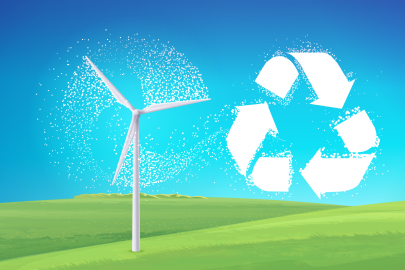 Six teams were selected for creating cost-effective recycling technologies for U.S. wind energy systems.
Six teams were selected for creating cost-effective recycling technologies for U.S. wind energy systems. -
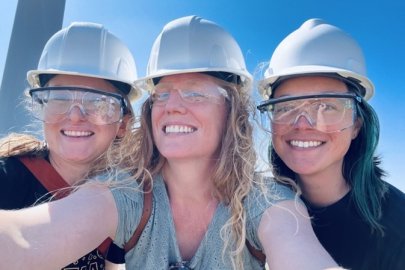 The wind energy workforce is made up of a wide range of people and skills. Learn about the career journey of PNNL lab program manager Alicia Mahon.
The wind energy workforce is made up of a wide range of people and skills. Learn about the career journey of PNNL lab program manager Alicia Mahon. -
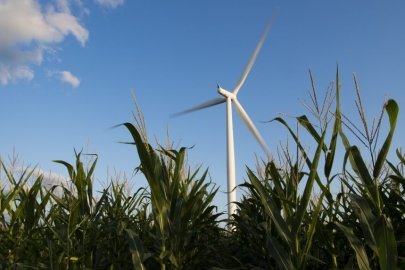 Learn how wind energy can provide health and environmental benefits that outweigh its costs.
Learn how wind energy can provide health and environmental benefits that outweigh its costs. -
In 2022 alone, wind and solar generation provided environmental and health benefits valued at 14.3¢/kWh and 10.0¢/kWh, respectively, and helped prevent 1,200 to 1,600 premature deaths in the United States.
-
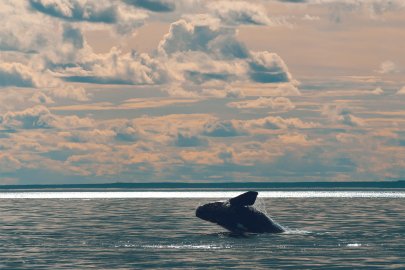 The Wind Energy Technologies Office is exploring the relationship between wildlife and wind turbines.
The Wind Energy Technologies Office is exploring the relationship between wildlife and wind turbines. -
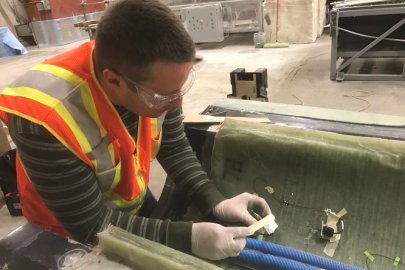 While studying mechanical engineering at the University of Texas in Austin, Paquette became interested in structural components and composite materials. Although he originally planned to pursue work in the aerospace industry, he jumped at the opportunity to work at Sandia on wind turbine blades—the largest composite structures in the world.
While studying mechanical engineering at the University of Texas in Austin, Paquette became interested in structural components and composite materials. Although he originally planned to pursue work in the aerospace industry, he jumped at the opportunity to work at Sandia on wind turbine blades—the largest composite structures in the world. -
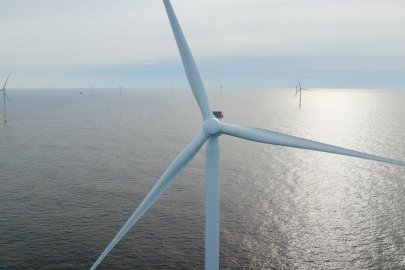 This opportunity will fund $48 million of projects that address several major areas of need for offshore wind, including accelerating research and development of offshore wind platforms, expanding the reach of the domestic supply chain, improving offshore wildlife protection through new monitoring technologies, and advancing U.S. academic leadership in floating offshore wind.
This opportunity will fund $48 million of projects that address several major areas of need for offshore wind, including accelerating research and development of offshore wind platforms, expanding the reach of the domestic supply chain, improving offshore wildlife protection through new monitoring technologies, and advancing U.S. academic leadership in floating offshore wind. -
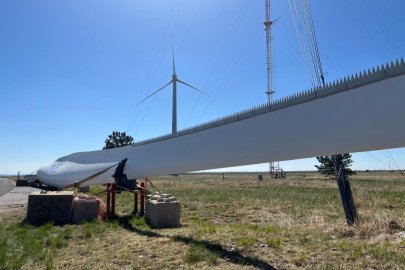 A new Berkley Lab analysis finds that despite an expected future reduction in the number of turbines per power plant, the total estimated annual energy output of wind plants will increase due to larger, more powerful wind turbines.
A new Berkley Lab analysis finds that despite an expected future reduction in the number of turbines per power plant, the total estimated annual energy output of wind plants will increase due to larger, more powerful wind turbines. -
 WETO seeks to fund multiple projects for the development of offshore wind environmental monitoring technologies and energy storage systems that can be used to mitigate variability and uncertainties of wind.
WETO seeks to fund multiple projects for the development of offshore wind environmental monitoring technologies and energy storage systems that can be used to mitigate variability and uncertainties of wind. -
 Discover how wind energy can help power your community and local economy.
Discover how wind energy can help power your community and local economy.
Featured Publications
-
2020's most notable wind energy research and development accomplishments.
-
Summary of the project goals, activities, and findings from the final technical report for the Mid-Atlantic Baseline Studies Project.
-
An overview of the current knowledge on greater sage-grouse ecology, status, conservation challenges, and current conservation efforts,
-
This report summarizes the results of a seven-year, DOE-funded research project, conducted by researchers from Kansas State University and the National Wind Coordinating Collaborative, to assess the effects of wind energy development in Kansas on the p...

